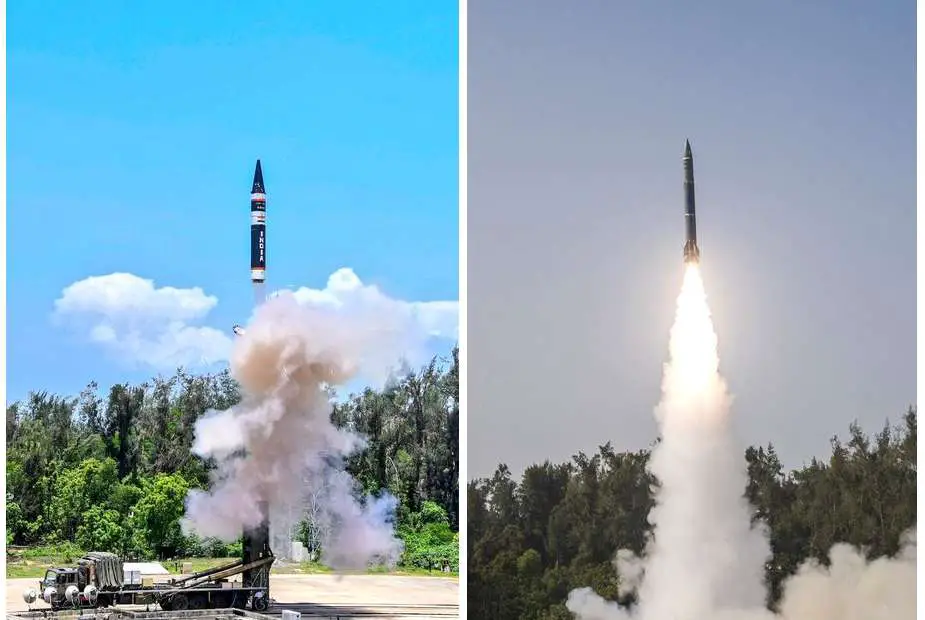Breaking news
India's air defense expands with successful test of Pralay ballistic missile.
On November 7, 2023, the Defense Research and Development Organization (DRDO) successfully test-fired the short-range surface-to-surface ballistic missile 'Pralay' from Abdul Kalam Island, off the coast of the Odisha coast. The test marks a crucial step in improving India's defensive preparedness along its borders with China and Pakistan.
Follow Army Recognition on Google News at this link

Defense Research and Development Organization (DRDO) successfully test-fired a short-range surface-to-surface ballistic missile 'Pralay' from Abdul Kalam Island, off the coast of Odisha coast. (Picture source: India MoD)
Launched at approximately 9:50 a.m., the 'Pralay' missile achieved all of its mission objectives, with its trajectory closely monitored by a series of tracking instruments along the coast. The missile, with a range of 350 to 500 km and a payload capacity of 500 to 1,000 kg, is a solid-fueled battlefield missile based on the Prithvi Defense Vehicle. It has been specifically developed for deployment along the Line of Actual Control (LAC) and the Line of Control (LoC), areas of strategic importance given the proximity to India's neighbors.
The name 'Pralay', meaning "Apocalypse", reflects the formidable capabilities of the missile. It is a canister missile, ensuring rapid transport and deployment. The project, launched in March 2015 with a budget of ₹332.88 crore ($63 million), is a testament to India's indigenous technological advancements and strategic autonomy.
The Imarat Research Center (RCI) was the lead integrator of the 'Pralay' project, which integrates technologies from India's Ballistic Defense Program, including the Prithvi Defense Vehicle (PDV) and the Prahaar tactical missile. This integration of technologies positions 'Pralay' alongside notable international counterparts such as the Dongfeng 12, Precision Strike Missile, 9K720 Iskander, and Hyunmoo 2 missile.
'Pralay' is powered by a solid-fuel rocket engine and follows a quasi-ballistic trajectory. It can perform in-flight maneuvers using a maneuverable re-entry vehicle (MaRV) to outmaneuver anti-ballistic missile (ABM) interceptors, a feature that enhances its survivability against modern defense systems.
The missile uses a composite propellant developed by the High Energy Materials Research Laboratory (HEMRL) for the Sagarika missile, part of the K family of missiles. This propellant is renowned for its efficiency and superior energy production by compared to that used in the Agni missile series.
Equipped with a high explosive preformed fragmentation warhead, the 'Pralay' also has Penetration-Cum-Blast (PCB) and Track Denial Penetration Submunition (RDPS) capabilities. It is designed to target critical military infrastructure such as radar and communications installations, command and control centers, and forward airfields with conventional warheads. The road-mobile system meets the tactical ballistic missile requirements of the Indian Army and fills the gap for a conventionally armed ballistic missile under India's nuclear 'No First Use' policy.
Efforts are currently underway to further extend the missile's range by several hundred kilometers. The 'Pralay' missiles are currently in mass production and are expected to enter operational service in the near future, enhancing India's tactical and strategic defense capabilities.



















